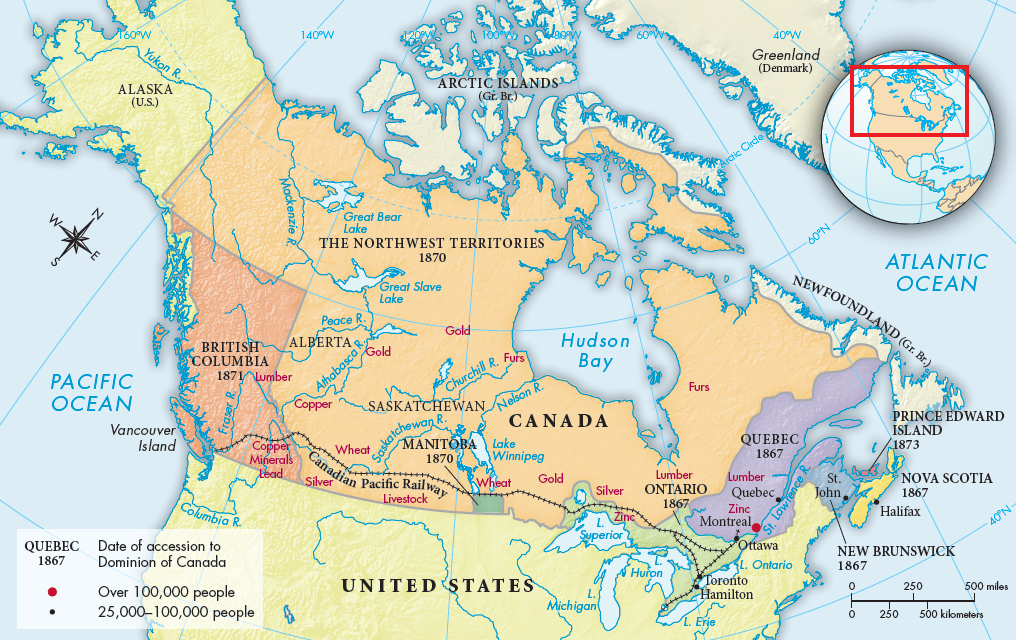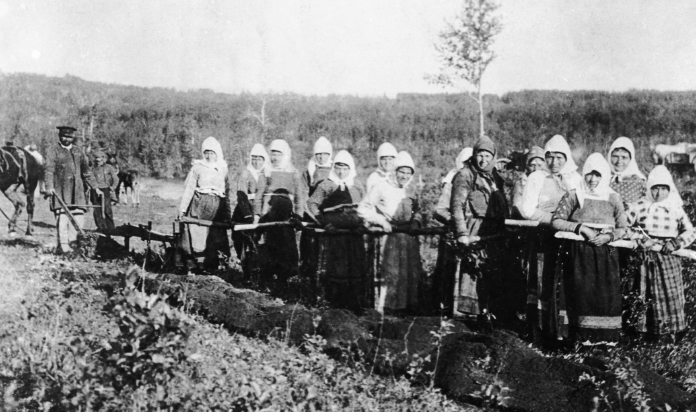Immigration to Canada
Canada was sparsely populated in the nineteenth century relative to other areas of the Americas. Provinces of the British colony gained governing autonomy after 1840 and organized a national government, the Dominion of Canada, in 1867 (Map 27.3). As in the United States and Latin America, the native peoples were pushed aside by Canada’s development plans, and their population dropped by half or more during the century, many succumbing to the newcomers’ diseases. French Canadians were the largest minority in the population, and they remained different in language, law, and religion.

Immigration to Canada increased in the 1890s. Between 1897 and 1912, 961,000 people entered Canada from the British Isles, 594,000 from Europe, and 784,000 from the United States. Some immigrants went to work in the urban factories of Hamilton, Toronto, and Montreal. However, most immigrants from continental Europe — Poles, Germans, Scandinavians, and Russians — flooded the midwestern plains and soon transformed the prairies into one of the world’s greatest grain-

>QUICK REVIEW
How did racial attitudes shape immigration to the Americas in the second half of the nineteenth century?